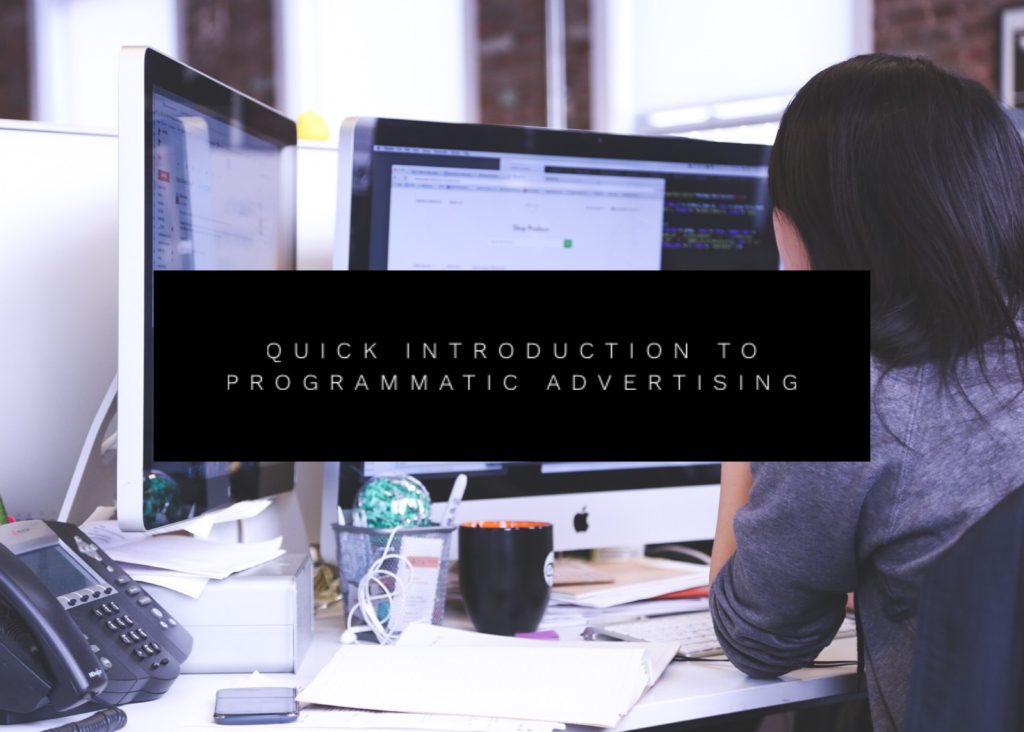Quick Introduction to Programmatic Advertising

It’s time for a quick introduction to programmatic advertising. Pop-up ads have become a relic of the past and soon, most other forms of online advertising. A new approach to online marketing, in the form of programmatic advertising, has begun to emerge to meet the demands of consumers. This article is focusing on what programmatic advertising is, and typical uses for businesses and brands.
Programmatic advertising
Human interaction has always been the driving force behind digital marketing. Publishers and advertisers always handled making deals selling and buying digital ad space available online. With the introduction of protocol RTB (Real-Time Bidding), artificial intelligence began taking over where humans left off.
Humans no longer have to negotiate pricing or availability with one another since sophisticated algorithms handle all negotiations now. An apparent positive is less room for human error. The artificial intelligence designed for programmatic advertising relies on algorithms to work for the best interest of both parties unbiasedly. The goal is to guarantee both parties gain – publishers sell high, and buyers buy low for evenly fair prices.
Publishers with web pages that have available digital ad space for sale put it up for auction on what can only be describable as a digital auction house. Advertisers place a bet on how much they are willing to pay for the placement – also known as an impression. Artificial intelligence matches the two-best compatible, and the process happens all over when a visitor visits a new web page.
Types of programmatic advertising ads
All of your common types of ads can become programmatic ads. Here’s a list of what you can establish a campaign with. This is a good place to start when looking for an introduction to programmatic advertising.
- Native advertising
- Video advertising
- Mobile advertising
- Audio Advertising
- Connected TV/OTT advertising
- Display advertising
- Digital-Out-Of-Home advertising
One of the biggest downfalls to previous methods of digital advertising was the “spray and pray” technique of partnering with major websites and brands to rely on their popularity for exposure. Programmatic advertising does not randomly place ads. Instead, it uses contextual reasoning to place ads in the most rational ad space. Native advertising is a perfect example of this type of marketing.
Native advertising is about putting ads within the content to appear as though the publisher intended to place it there. Content focusing on hiking expeditions will have ads for hiking equipment in the middle of the article, for instance. The artificial intelligence uses meta tag data to group ads and context that pair well together.
The same tactic applies to retargeting practices, as well. Your browser tells the software where you have been and your behavior interacting with websites. The software uses this information about your behavior and browser history to get a better grasp of what advertisements are best to serve you.
Future of digital advertising is programmatic
Wasted ad spending is vastly decreasing as conversion rates escalate. Artificial intelligence will continue to advance in contextual reasoning to place relevant ads with a higher conversion rate in more desirable ad spaces. Less time is spent negotiating, and more time is spent designing ads meant to achieve goals.
One argument against programmatic advertising is losing out on bids. However, the root of the problem lies in the budget, more so than being overlooked for arbitrary reasons. Low bids still do not get the ad space just the same as before. Keep this in mind; some ads don’t belong everywhere. Retargeting campaigns focus on previous viewers that have shown an interest in a brand or product. Focusing on strong SEO for organic reach and relying on retargeting campaigns is a far better use of programmatic than only relying solely on it to bring in traffic.
All digital marketing techniques can suffer from flaws. No one technique is perfect, but leveraging artificial intelligence to your advantage will give you the upper hand over your competition. We hope our introduction to programmatic advertising taught you the basics!